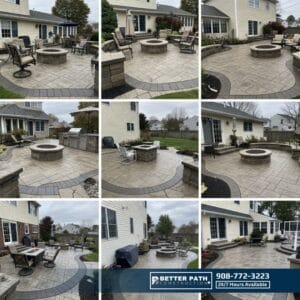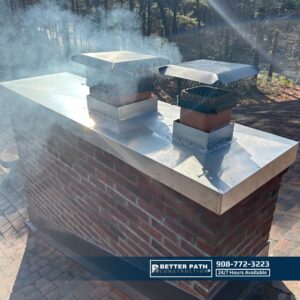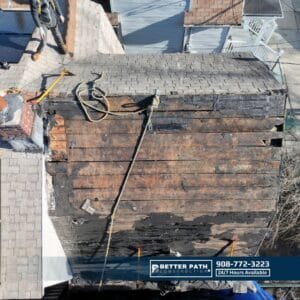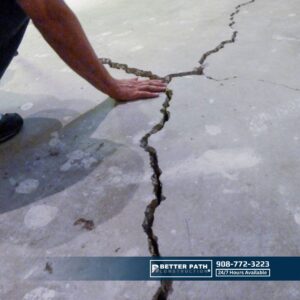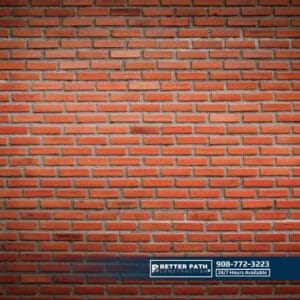Installing outdoor steps can transform your yard, improve accessibility, and enhance safety around your home. If you’re wondering, “How do you install outdoor steps?” the process involves careful planning, selecting durable materials, and following precise steps to ensure stability and longevity. For instance, at Better Path Construction LLC in Little Falls, NJ, we’ve helped numerous homeowners across New York neighborhoods build reliable steps that withstand harsh weather. To begin, measure the rise and run, prepare the site, and choose materials like wood, concrete, or stone. Consequently, with the right tools and techniques, you can complete this project over a weekend. However, for complex slopes or custom designs, consulting professionals ensures compliance with codes and durability. In this guide, we’ll walk you through every step.
Planning Your Outdoor Steps: Laying the Groundwork
Before exploring how to install outdoor steps, thorough planning is essential. Specifically, this phase sets the foundation for a successful project, preventing costly mistakes later.
Measuring the Rise and Run for Precision
First, many homeowners ask, “How do you calculate the number of steps needed?” To start, measure the total height (rise) from the ground to the landing, such as a deck or porch. Then, divide this by the ideal riser height—typically 6 to 8 inches for comfort and safety. For example, a 42-inch rise might require six 7-inch risers. Next, determine the run, or tread depth, aiming for 10 to 12 inches to ensure full foot placement. According to building codes, the sum of the riser and tread should be around 17-18 inches for optimal ergonomics. At Better Path Construction LLC in Little Falls, NJ, we meticulously verify these measurements to comply with New York regulations, ensuring safe steps for families.
Moreover, related questions like “How steep can outdoor steps be?” often arise. Steeper steps (over 8-inch risers) increase fall risks, so opt for gentler slopes whenever possible.
Assessing Your Site and Securing Permits
Next, evaluate the terrain: Is it sloped, rocky, or prone to erosion? For instance, in hilly New York areas, excavate a stable base to prevent shifting. Additionally, don’t overlook permits—many locales require them for structural changes. In our experience at Better Path Construction LLC, skipping this step can lead to fines or forced removals.
Furthermore, statistics highlight the importance of site preparation. According to the National Floor Safety Institute, poor foundations contribute to stairway falls, which cause over 2.6 million injuries annually in the U.S. Therefore, assess soil drainage and add a gravel base to avoid water pooling, especially in rainy New York climates.
Choosing the Best Materials for Outdoor Steps
Once planning is complete, selecting materials is critical when learning how to install outdoor steps, as they must endure weather, foot traffic, and time.
Popular Options: Wood, Concrete, Stone, and Composite
First, wood, such as pressure-treated lumber, is affordable and easy to work with, costing $15-$210 per tread. For example, it’s ideal for deck stairs but requires sealing to prevent rot—a common issue in humid NJ summers if neglected.
Next, concrete offers durability for high-traffic areas, with precast steps averaging $600-$5,000. Moreover, it’s slip-resistant when textured but heavy to install.
Additionally, stone, like granite or bluestone, provides a natural look and exceptional longevity. Granite is particularly durable in outdoor settings. Costs range from $10-$60 per tread, making it a premium choice for elegant New York homes.
Finally, composite materials blend wood fibers and plastic for low-maintenance appeal, resisting fading and insects—perfect for busy families. At Better Path Construction LLC in Little Falls, NJ, we often recommend composites for their balance of aesthetics and ease.
Factors to Consider: Durability, Cost, and Aesthetics
Moreover, durability is paramount: Materials like stone withstand New York’s freeze-thaw cycles better. Cost-wise, basic wood starts at $500 for a small set, while stone can reach $2,500. Additionally, aesthetics matter—match your home’s style for curb appeal.
Expert quote: “Composite stairs offer the look of wood without intensive upkeep,” notes a landscaping specialist from Willow Ridge Garden Center. Consequently, this aligns with our experience in NJ, where low-maintenance options save time.
Tools and Supplies Needed for Installation
Before starting, gather essential tools to install outdoor steps effectively. For example:
- Measuring tape, level, and string line for accuracy.
- Shovel, tamper, and wheelbarrow for site prep.
- Circular saw, drill, and screws for assembly.
- Safety gear: Gloves, goggles, and knee pads.
For concrete steps, add forms and a mixer. Budget $100-$300 for tools if DIYing. At Better Path Construction LLC, we emphasize quality tools to avoid mishaps.
Step-by-Step Guide: How Do You Install Outdoor Steps?
Now, let’s dive into a detailed walkthrough, answering “How do you install outdoor steps?” with practical tips.
Step 1: Prepare the Site
First, clear vegetation and excavate to the frost line (about 36 inches in NJ) to prevent heaving. Then, add a 4-6 inch gravel base, compacted for drainage. For added stability, pour a concrete footer if needed.
Step 2: Build the Stringers or Forms
Next, for wood steps, cut stringers using a framing square for precise angles and install with joist hangers. For concrete, set forms and reinforce with rebar.
Expert tip: “Use pressure-treated stringers for the correct rise,” advises Lowe’s guides.
Step 3: Install Risers and Treads
Then, attach risers first, followed by treads, ensuring each is level. For stone, mortar them in place and secure with spikes or screws.
Step 4: Add Railings and Finishing Touches
Finally, install railings for steps over 30 inches high, mandatory per codes. Set posts plumb and add balusters spaced no more than 4 inches apart. Additionally, seal wood or apply anti-slip tape for safety.
This process typically takes 1-3 days, depending on scale.
Safety Considerations in Outdoor Steps Installation
Importantly, safety is critical—over 1 million stair-related injuries occur yearly, with falls causing 12,000 deaths. For example, uniform risers reduce trip hazards; varying heights are a top issue.
Moreover, in wet climates like New York, use non-slip surfaces. Handrails should be graspable, 34-38 inches high.
Expert quote: “Stairs are hard to build right! One common mistake is the transition from treads to floor nosing,” says a building expert in a YouTube tutorial.
Common Mistakes to Avoid When Installing Outdoor Steps
To ensure success, avoid these pitfalls:
- Uneven bases: This leads to settling and tipping.
- Inconsistent rise/run: This causes trips; keep variations under 3/8 inch.
- Neglecting drainage: Water accumulation rots wood or cracks concrete.
- Poor material choice: Untreated wood rots fast in humid areas.
At Better Path Construction LLC in Little Falls, NJ, our 20+ years of local experience help us avoid these, drawing from projects across New York.
Cost Breakdown: How Much Does It Cost to Install Outdoor Steps?
Generally, expect $250-$384 per linear foot for basic installs. A full set averages $1,300-$5,000, varying by material and labor. In 2025, with inflation, wood steps might cost $500-$1,500 DIY, while professional stone installs hit $2,000+.
For instance, factors include location (higher in urban NY), size, and add-ons like lighting ($100-$500).
Maintenance Tips for Long-Lasting Outdoor Steps
Furthermore, regular maintenance prevents issues. For example, seal wood annually, clean stone with mild soap, and inspect for cracks. In NJ winters, de-ice carefully to avoid damage.
Answering Related Questions: Beyond the Basics
Additionally, readers often ask, “Can I install outdoor steps on a slope?” Yes, with terracing and anchors. Another question: “What about lighting?” LED strips improve visibility, reducing accidents by up to 20% in low-light areas.
Moreover, “How do you make steps pet-friendly?” Wider treads and gentle risers help.
Expert quote: “Building deck stairs can be tricky, but estimating dimensions properly is key,” shares Family Handyman.
FAQs
Typically, a simple set takes 1-2 days DIY. However, professionals like Better Path Construction LLC can finish in hours, depending on complexity.
For instance, add textured tape, grit paint, or choose grooved concrete. In rainy NJ, this is essential for safety.
For basic projects, no, but for slopes or codes, yes. Our team in Little Falls, NJ, offers free consultations.
Conclusion: Build Your Steps with Confidence
Ultimately, mastering how to install outdoor steps boosts your home’s functionality and value while prioritizing safety. With careful planning, quality materials, and attention to detail, you’ll create durable access that lasts for years. If DIY feels daunting, trust local experts like Better Path Construction LLC in Little Falls, NJ. With our expertise serving New York neighborhoods, we deliver custom solutions backed by experience. Therefore, contact us today for a free quote—let’s build a better path together!





